Chicago Cubs: Greatest players of the decade – #30-21

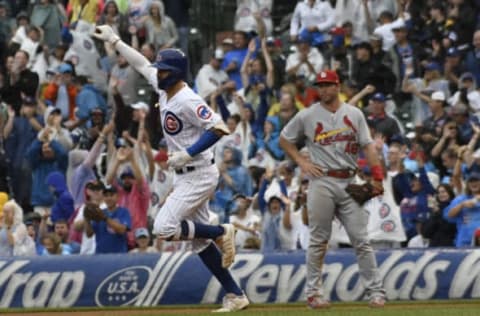
Here we count down the greatest Chicago Cubs of the 2010s, continuing with numbers 30-21, as we work our way toward the best of the decade.
The 2010s featured both the lowest of lows and the highest of highs for Chicago Cubs fans. The decade started with the end of the Jim Hendry era, in which the former General Manager made a couple of last-ditch efforts to turn a failing franchise around. It didn’t work out, however, as the team finished under .500 in both 2010 and 2011.
Then, Theo Epstein took over before the 2012 season and made sweeping changes. The franchise bottomed out in 2012, as the team started its painful rebuild and finished 61-101. The team slowly improved over the next few years before the front office brought Joe Maddon in to manage the up-and-coming roster. With a few big additions, the Cubs went 97-65 in 2015 and made it all the way to the National League Championship Series.
With some more tweaks to the roster, the team went 103-58 in 2016 and survived a tough postseason to win their first World Series championship in 108 years. The rest of the decade, by Chicago Cubs standards, was pretty good, as the team finished over .500 every year and made the postseason two additional times.
Along the way during this past decade, we’ve seen many great players come and go through the North Side of Chicago. Putting together a list of the 50 greatest was a challenge, as players played varying amount of years with the team and contributed in different ways, both on and off the field. However, after much work, I have put together my list. Today, we continue with numbers 50-41.
Click here for numbers 50-41; click here for numbers 40-31.
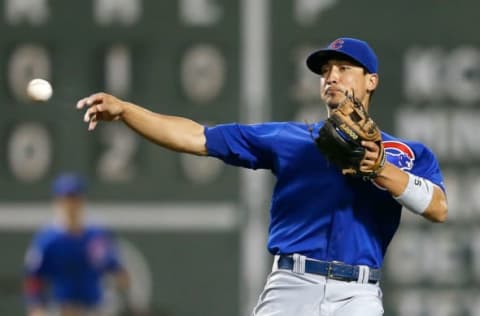
Chicago Cubs: No. 30: Darwin Barney
Darwin Barney is a player who benefitted from our increased emphasis on defense and on analytics in recent years. Though he made some contributions with the bat, it was with his defense that he provided the most value for the Chicago Cubs.
Barney debuted with the Cubs in 2010 and got into 30 games. Though he didn’t impress with the bat – his OPS was a sluggish .585 – he showed a lot on defense and earned a 0.6 defensive WAR. The next year, Barney would get a lot more playing time, appearing in 143 games. He continued to play good defense and got his OPS up to .666 while driving in 43 runs. That was good enough for him to place seventh in NL Rookie of the Year voting.
Barney’s biggest season came in 2012. Again, he contributed some with the bat, driving in 44 runs in 156 games. But on defense, the slick-fielding infielder posted an incredible 3.6 WAR, and he tied a Major League Baseball record by going 141 consecutive games without an error committed.
Barney was a mainstay during the rough years of the early Theo Epstein era. He had a rough year at the plate in 2013 but still played good defense and in 2014 the Cubs traded Barney to the Los Angeles Dodgers midway through the season. Barney also played for the Toronto Blue Jays before last appearing in the majors in 2017.
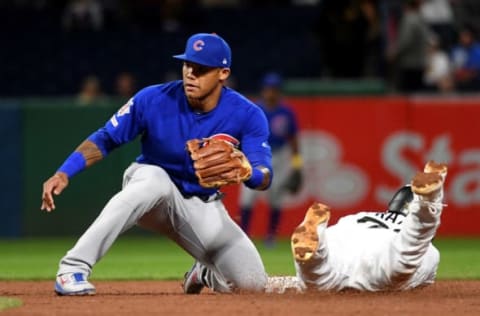
Chicago Cubs: No. 29: Addison Russell
Addison Russell has had a tumultuous tenure with the Chicago Cubs and he’s likely played his final game with the team. However, we can’t forget the contributions that he did make to the team on the field, especially in the early part of his career.
The Cubs traded for Russell when he was still in the minor leagues during the 2014 season. The team surprised a lot of fans by bringing Russell up to the majors early in the 2015 campaign, shortly after bringing Kris Bryant up. In 142 games that year, Russell smacked 29 doubles and hit 13 home runs while driving in 54. He saw time at both second base and shortstop and played phenomenally, posting a defensive WAR of 2.6.
Russell looked like he was becoming a star during the 2016 season. He hit 21 home runs and drove in 95 while continuing to play elite defense, this time as the everyday shortstop. However, while he did contribute over the next two seasons, he didn’t come close to his 2016 production at the plate (though he continued to play great defense). Eventually, he was moved back to second base to make way for Javier Baez.
In 2018, Russell accepted a suspension for off-the-field conduct and when he came back in 2019 he struggled mightily. Again, it’s hard not to judge Russell based on his off-the-field issues. But when we look past that, we can see that he was an important part of the team the past few years, particularly in 2015 and 2016.
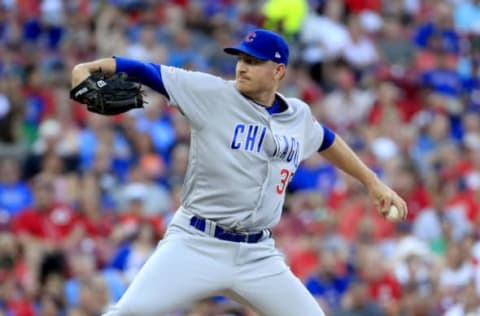
Chicago Cubs: No. 28: Mike Montgomery
For years, Chicago Cubs fans wondered what it would be like when the team finally won the World Series. One question would be, who would be on the mound to get the final out? Mike Montgomery may have been among the most unlikely of candidates heading into the 2016 season.
The Cubs traded for Montgomery from the Seattle Mariners during the 2016 season in order to give their bullpen a boost, with future All-Star Daniel Vogelbach going the other way.) Montgomery made 12 relief appearances and five starts for the Cubs that year, posting a 2.82 ERA. His claim to fame would come in the tenth inning of Game 7 of the World Series, when the Cleveland Indians rallied and Joe Maddon brought him in to get Michael Martinez to ground out to end the game.
Montgomery ended up being a valuable swing man over the next two years, putting up an ERA under 4.00 in both 2017 and 2018 while pitching both as a starter and reliever. However, he struggled in 2019, posting a 5.67 ERA in 20 relief appearances before the Cubs traded him to the Kansas City Royals.
Thus, in 2019, the Cubs traded away both tenth men who took the ball in the final frame of that fateful game (Carl Edwards, Jr. being the other). Though Montgomery is now gone, he’ll always be the answer to that one trivia question.
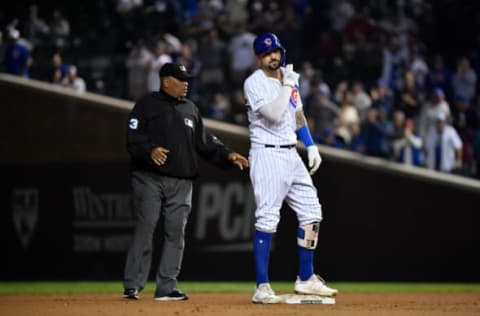
Chicago Cubs: No. 27: Nicholas Castellanos
In order to make it this far up the list of the greatest Chicago Cubs of the past decade after playing just two months for the team, you’d have to make quite an impression. Yet Nicholas Castellanos did just that, and it ended up being one of the best midseason trades the Cubs ever made.
Castellanos instantly became a fan favorite after the Cubs traded for him from the Detroit Tigers just before the July 31 trade deadline passed. Check out these numbers: In 51 games, Castellanos batted .321, slugged .646, and hit 21 doubles and 16 home runs while driving in 36.
Overall on the season, he hit an astounding 58 doubles. There’s not much more that needs to be said; the numbers speak for themselves. It’s just too bad that Castellanos couldn’t lead the team to a playoff appearance.
Will the Cubs be able to bring back Castellanos for 2020? Many fans are hoping that will happen; personally, I’d love to see what he can do over a full season. Clearly, his game works well at Wrigley Field, and Castellanos seemed to love playing in Chicago. Let’s see if both sides can get it done.
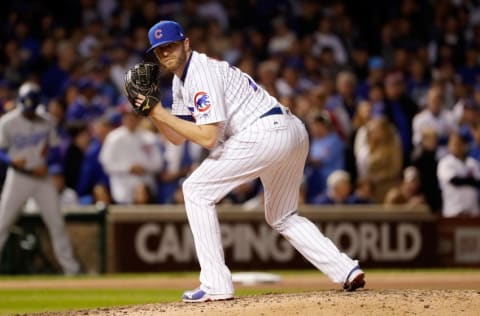
Chicago Cubs: No. 26: Wade Davis
Wade Davis is another player whose tenure with the Chicago Cubs was short; he was only with the team for one year, in 2017. However, he had a tremendous year as the team’s closer, and for that he earns this spot on the list.
In the first few years of his career, Davis failed to stick as a starting pitcher. However, he found great success in relief with the Kansas City Royals in 2014-2016 posting the following earned run averages: 1.00, 0.94, and 1.87.
After the 2016 season, with a vacancy at closer, the Cubs traded Jorge Soler to the Royals for Davis. Davis was solid as the closer, posting a career-high 32 saves in 33 chances. The Cubs traded for the right-hander knowing he likely would leave after 2017 as a free agent, and he did, joining the Colorado Rockies.
Given the year that Soler recently had, leading the American League in home runs, it’s easy to say that this was a bad trade for the Cubs. However, given where Soler was in his career and how important Davis was to the team’s success in 2017, I still don’t think it was the wrong move to make.
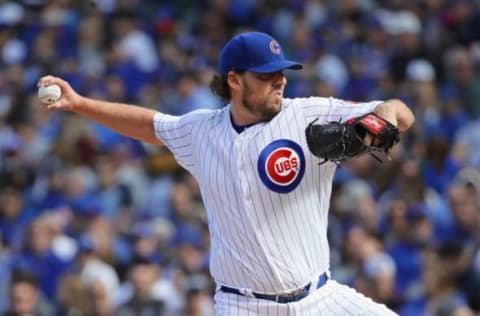
Chicago Cubs: No. 25: John Lackey
John Lackey had a long, successful big league career that started in 2002 with the World Series champion Anaheim Angels. Coming off one of the best seasons of his career in 2015 with the St. Louis Cardinals, the Chicago Cubs signed the veteran Lackey to help fill out their starting rotation as they prepared for a championship run.
We tend to forget that Lackey was actually very good for the Cubs in 2016. He was exactly what the team needed out of a back-of-the-rotation starter, putting up a 3.35 ERA in 29 starts. Lackey’s final season, both with the Cubs and for his career, wasn’t as pretty, as his ERA jumped to 4.59 while he led the league with 36 home runs allowed.
Still, given the Cubs won a championship in 2016 and another division title in 2017, we can say that Lackey’s time with the Cubs was an undisputed success.
When asked about his goals in 2016, Lackey famously said that he didn’t come to Chicago for a haircut. He wanted to win another World Series, and thanks in part to his contributions, the Cubs were able to do just that.
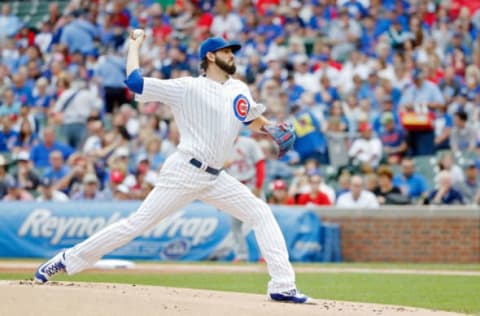
Chicago Cubs: No. 24: Jason Hammel
Because he wasn’t a part of the team’s postseason success in 2016, we tend to forget about Jason Hammel and his contributions to the Cubs in the middle part of the decade. However, when we look back, we can see that he was a key member of the club.
Hammel signed with the Cubs prior to the 2014 season and was tremendous for them: In 17 starts, he put up a 2.98 ERA. He then was a part of the midseason trade with the Oakland Athletics that year, along with fellow pitcher Jeff Samardzija, that brought the team Addison Russell.
Hammel wasn’t quite as good with the A’s down the stretch, but the Cubs decided to bring him back for the 2015 season and again he was solid, making 31 starts and putting up a 3.74 ERA. Hammel was again an important piece during the 2016 regular season, starting 30 games and putting up a 3.83 ERA.
Hammel was the odd man out of the rotation for the 2016 playoffs and did not appear in a postseason game. However, he’ll always be an important part of that team, even if many fans have forgotten. Hammel last pitched in the majors with the Royals in 2018.
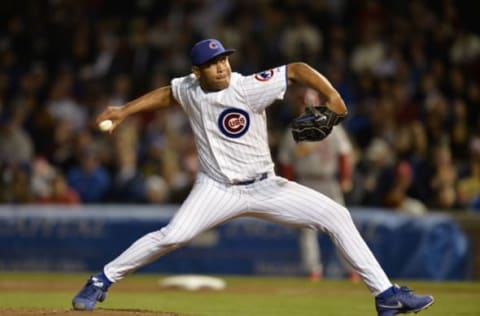
Chicago Cubs: No. 23: Carlos Marmol
A lot of Chicago Cubs fans are probably wondering what Carlos Marmol is doing on this list; after all, his career with the Cubs did not end well. However, because of that, it’s easy to forget that he actually had a solid run of a few years as the team’s closer.
Marmol was a tremendous middle reliever for the 2007 and 2008 NL Central Championship teams. In 2009, he got to earn 15 saves. Then, he had a great year as the full-time closer in 2010: Marmol led the league with 70 games finished and earned 38 saves while posting a 2.55 ERA. In 2011, the right-hander wasn’t quite as good, though he still got 34 saves, and in 2012 he earned 20 saves.
Marmol had always had command issues, but for a good part of his career, he was able to pitch around them. It may have finally caught up with him in 2013, as things fell apart, with him putting up a 5.86 ERA before the Cubs traded him to the Los Angeles Dodgers.
Many Cubs fans have memories of Marmol throwing the ball all over the place and blowing games, yet he earns this spot on the list because of the success that he did have.
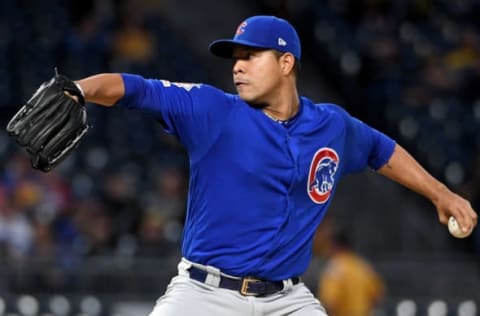
Chicago Cubs: No. 22: Jose Quintana
More from Cubbies Crib
- Cubs: Adrian Sampson is forcing his way into the conversation
- Projecting the Chicago Cubs bullpen to open the 2023 season
- Cubs fans are beginning to see the light at the end of the tunnel
- Justin Steele has evolved into a frontline starter for the Cubs
- The future of first base is murky right now for the Cubs
Jose Quintana is always going to be that guy the Chicago Cubs got when they got rid of Eloy Jimenez and Dylan Cease, both of whom (especially Jimenez) figure to be stars for the Chicago White Sox. Quintana hasn’t pitched as well as we hoped for when the Cubs made that trade in the middle of the 2017 season, but overall he’s been decent.
Quintana was actually pretty good down the stretch for the Cubs during the 2017 season. In 14 starts, he put up a 3.74 ERA while striking out 98 batters in 84 1/3 innings pitched. He had two solid outings for the Cubs in the playoffs that year, though he had one terrible one in Game 5 of the NLCS in which the Cubs were eliminated. In 2018, Quintana put up a 4.03 ERA in 32 starts, and in 2019 it was 4.68 in 32 games (31 starts). That’s not great, but it’s not terrible, and at least he’s been a guy who’s capable of taking the ball every fifth day.
Has Jose Quintana reached the end of the line for the Chicago Cubs? There’s debate as to whether the team should pick up his option for next season. Though Quintana hasn’t pitched up to expectations since joining the Cubs, he hasn’t been a total disaster, either. In fact, since he’s had some pretty good games over the years, he’s earned this spot on the list.
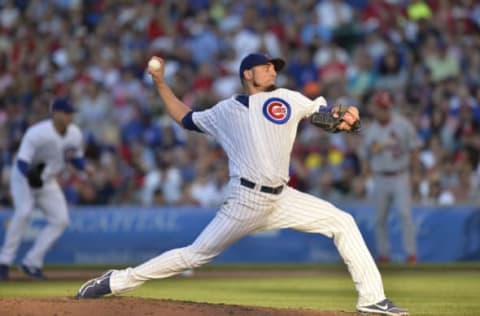
Chicago Cubs: No. 21: Matt Garza
It’s easy to forget that Matt Garza even pitched for the Chicago Cubs. Yet he was a mainstay in the rotation during some of the dark days of early in the decade.
In what I think many fans would agree was a desperate move, Jim Hendry traded for Garza from the Tampa Bay Rays prior to the 2011 season and gave up a haul that included future All-Star pitcher Chris Archer and current Houston Astros catcher Robinson Chirinos. The team didn’t perform well in 2011, but Garza had a good year, starting 31 games and putting up a 3.32 ERA while striking out 197 batters in 198 innings.
When Theo Epstein cleaned house prior to the 2012 season, he decided to hold onto Garza, and Garza put up a 3.91 ERA, though he didn’t pitch after July 21. In 2013, Garza bounced back to put up a 3.17 ERA in 11 starts before the Cubs traded him to the Texas Rangers for two players that have appeared on this list, Carl Edwards, Jr. and Justin Grimm, along with Mike Olt and Neil Ramirez.
dark. Next. Will Maddon bring a title back to the Angels?
Garza pitched for the Milwaukee Brewers from 2014-2017, and that’s when he last pitched in the majors.